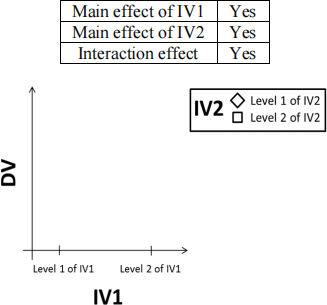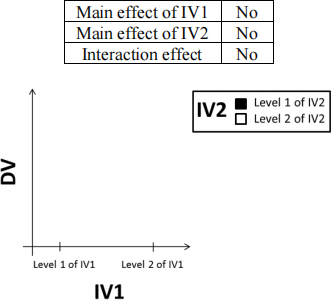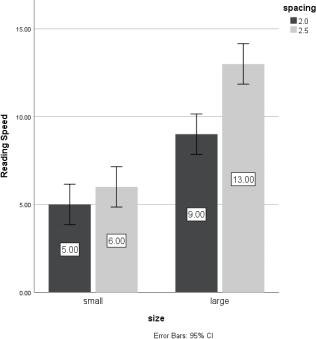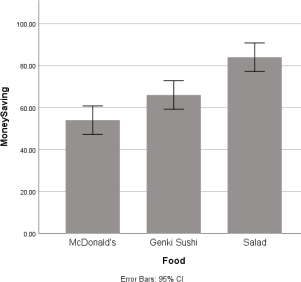PSY2003 Statistics for Psychology
Hello, dear friend, you can consult us at any time if you have any questions, add WeChat: daixieit
Department of Psychology
PSY2003 Statistics for Psychology
Final Assignment Guidelines and Questions
Guidelines:
Submission Deadline: 11:59pm, April 19, 2024 (only softcopy is required) (20% of the final grade)
Declaration of Original Work
Plagiarism is a serious misconduct. No part of students’ assignment should betaken from other people’s work without giving them credit. All references must be clearly cited. Any plagiarism found in students’ completed assignments can lead to disciplinary actions such as mark deduction, disqualification or even expulsion by the University.
Format
You MUST include (a) full ID name in English, (b) student number, (c) page number and (d) total number of pages on EVERY answer sheet.
Instructions
1. Answer ALL questions and put all your answers on the standard answer sheet provided.
2. Submit the softcopy of the answer sheet to Moodle BY THE DEADLINE.
3. Late submission is not accepted.
Question 1 (20 marks)
(a) Sketch what the LINE CHART would like given the following scenario. Sketch the plot on the answer sheet. (5 marks)

(b) Sketch what the BAR CHART would like given the following scenario. Sketch the plot on the answer sheet. (5 marks)

(c) Study the following figure, which is about how line spacing and character size affect reading speed.
• Is there any potential interaction effect? Illustrate your answers by the group means listed on the figure.
• What does the interaction effect mean in this study? (10 marks)

Question 2 (30 marks)
Dr. Cheung conducted an experiment about how the type of food would subliminally influence a person’s money saving behaviour. He recruited 15 participants and randomly assigned them into three experimental conditions including “American fast food”, “Japanese” and “Vegetarian”. In the “American fast food” condition, the McDonald’s restaurant logo (i.e., priming image) was flashed in 200 milliseconds; as for the “Japanese” and “Vegetarian”, the priming image was “Genki Sushi” and “Salad” respectively. After the priming phase, participants were given a scenario about how much they would save if they got a windfall (unexpected money) of HK$100. The amount of money that they planned to save in different experimental conditions is listed in the following table. Dr. Cheung wanted to know whether the logo of different types of food would make any effect on a person’s money saving tendency.

(a) Perform a suitable statistical test to test the research hypothesis according to the research design in this experiment BY HAND. Make conclusions in proper format at the end. (16 marks)
(b) Analyse the following figure and identify the pairs that show statistically significant difference in terms of the money they planned to save. (4 marks)

(c) Dr. Cheung wantstore-run this experiment. This time he will recruit six participants and require each of them to finish the task in all the three experimental conditions. Each participant will finish the task in a same experimental condition exposure sequence (i.e., McDonald’s → Genki → Salad). The number of trials of each participant in each condition will be 200. Therefore, in total they will do 600 trials. Discuss and explain a potential problem in this experiment design. (4 marks)
(d) Suggest TWO ways to tackle the problem you have indicated in (c). Also illustrate the differences regarding the operational procedures between them. (6 marks)
Question 3: Short Questions (10 marks)
(a) Dr. Ho is interested in doing research related to “helping” behavior. Identify 2 different ways that you can operationally define “helping” behavior for his study. (4 marks)
(b) To test the effectiveness of a public speaking class debates were held between students who had taken the course and students who had not. Observers rated each debater’s persuasiveness on a scale from 0 to 4. What research method was adopted in this study (correlation, quasi-experiment or “true” experiment)? Explain your answer. (6 marks)
Question 4.1 (20 marks)
I was interested in studying how money image influenced the first impression formation process. I recruited ten participants, and they were randomly assigned into two groups. In money condition, a money image was flashed for 2 second then an emotionally neutral face was shown up, participants were required to rate the trustworthiness level of that face. In the phase scrambled money image condition, instead of showing the ordinary money image, the money image was phase scrambled. My hypothesis was that people who was exposed to money image would rate a stranger’s face as less trustworthy. Did the results below support my hypothesis?

a) Perform a suitable statistical test BY HAND to test the research hypothesis. (10 marks)
b) Calculate the 95% C.I. of the difference between two groups BY HAND. How could you make use of it to determine whether the null hypothesis is rejected or not? (4 marks)
c) Perform the same statistical test BY SPSS, report the findings in APA format. (6 marks)
Note: For by-hand calculation questions, all steps including hypothesis statements, observed statistics calculations, decision making and conclusions in APA format should be covered.
Question 4.2 (20 marks)
After the experiment 1 that described question 4.1, I was interested in how the denomination of the bank note would affect the effect of the first impression formation of human faces. I randomly assigned 15 participants into three experimental conditions including “HKD500”, “HKD50” and “Phase Scrambled” conditions. The experimental procedures were much the same as those described in the question 4.1 above. I hypothesized that the first impression formation mechanism would be influenced by the denomination of the banknote.

a) Test the research hypotheses again BY SPSS. (10 marks)
b) Calculate and interpret the effect size BY HAND. (6 marks)
c) How does sample size affect Levene’s test, explain the reasons. (4 marks)
2024-04-04